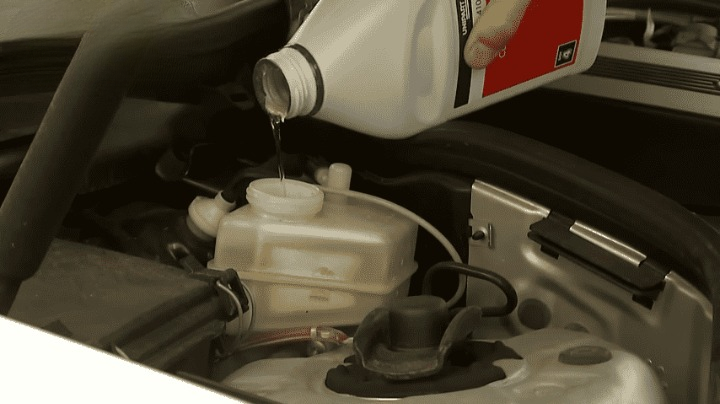Brake fluid can be referred to as the blood of cars because it is vital in the braking system of vehicles. Without it, your brakes simply wouldn’t work; this would be something new you have to get used to, and it will take a while to get used to it. However, adding bare brake fluid will not solve the problem; some significant steps must be accomplished for proper and safe functioning of the brake system. Here are the 5 simple procedures the article guides you with once you add brake fluid to your car.
Step 1: Check for Leaks
Why Checking for Leaks is Crucial
Hoses that are worn out, which supply the brake system, can cause brake failure, which could be fatal. Again, a drip may reduce the level of the fluid even if you have just refilled it often.
How to Inspect for Leaks
To diagnose it, you should look for stains, wet patches, or puddles of water under your car. Focus primarily on the part of the car that is close to the wheels and the brake lines. Another place is the brake fluid reservoir for looking at the exterior of it with the hope of seeing some fluid on it. Should you discover any, it becomes mandatory to plug them as soon as possible.
Step 2: Check the Brake Fluid Level

Understanding Brake Fluid Levels
The brake fluid reservoir is shaped like a container and has already been mentioned as the minimum and maximum. It is important to maintain the condition of the brakes by keeping the fluid level between these marks.
How to Check the Fluid Level
When it comes to the brake fluid level, the latter is observed through the transparent tank, which is opened with the hood raised. See to it that the automobile is parked on a level ground. The level of the fluid should be between the ‘min’ and ‘max’ marks or signs. If it is below the minimum, you should introduce more fluid into the process.
What to Do If the Level is Low
If the brake fluid is low, pour the appropriate kind of brake fluid till the maximum level of the container is achieved. Make sure not to overfill, as this causes the liquid to overflow and compromise other parts of the circuit.
Step 3: Test the Brake Pedal

The Proper Techniques of Brake Pedal Test
because testing the brake pedal checks on your brake system after adding fluid. The brake pedal should be rigid and very sensitive in order to allow effective and safe halting of the vehicle.
How to Test the Brake Pedal
Get behind the wheel of a car and apply the brake pedal several times. It should feel more firm when pressed and should not be spongy. If the pedal is spongy or goes near the floor, it means there may be air in the system or another problem may be there.
Signs of a Problematic Brake Pedal
A soft, spongy, or insensitive brake pedal should not be the case, which is a sign of a possible complication. If you experience any of these, then it is advisable that you seek the service of qualified personnel to have your brake system checked.
Step 4: Take a Short Test Drive

Purpose of a Test Drive
A short test drive will help ascertain that your brakes work properly in road-like conditions. This lets you get a feel for how the brakes react and if there is a problem.
What to Look for During the Drive
An additional thing you need to remember is how the brakes feel and sound during the test drive. It should be firm to the touch, and when applying the brakes, the car should stop without any strange sounds. Something is wrong if you hear a grinding, squealing, or dragging sound or if the car pulls to one side during steering.
Safety Tips for Test Driving
When testing after adding brake fluid, make sure you are in an area where there is low traffic. Do not drive fast, and be ready to brake heavily if there is a need to do so.
Step 5: Monitor Brake Performance Regularly
Importance of Ongoing Monitoring
A brake system checkup is an essential procedure that is used to ascertain that the brake system is still working appropriately. It assists you in preventing many things from getting worse in the future and becoming major concerns.
How to Monitor Brake Performance
Check out the condition of your brakes and also be keen on any sound that your vehicle is making. Give the brakes an occasional check to see if the brake fluid is at its appropriate level and also if it leaks. Finally, if you observe any symptoms of poor brakes, then it is high time you fix the problem.
When to Seek Professional Help
In any circumstance where you are in doubt about your brake system, or you have continuous problems, it is advisable to consult an expert mechanic. Thus, they can diagnose and ent problems more effectively.
Final Words
It is exceptionally vital to keep the brake system of your car in great condition to enhance safety while driving. Checking for leaks, measuring the correct brake fluid level, testing the brake pedestal, making a test drive, and observing the above-mentioned considerations after adding brake fluid will assist in maintaining your brakes in the best condition. You should periodically service your car along with being attentive to any matter connected to your braking system to guarantee that it stays reliable.
FAQs
How often should I check my brake fluid?
It’s a good idea to check your brake fluid every month or before long trips to ensure it’s at the correct level and free from contaminants.
What are the signs that I need to add brake fluid?
Common signs include a warning light on the dashboard, a soft or spongy brake pedal, and reduced braking performance.
Can I mix different types of brake fluid?
No, mixing different types of brake fluid can cause damage to the brake system. Always use the type recommended by your vehicle’s manufacturer.
What should I do if my brake fluid keeps running low?
If your brake fluid level keeps dropping, there may be a leak in the brake system. Have it inspected by a professional as soon as possible?
Is it safe to drive if my brake fluid is low?
Driving with low brake fluid is dangerous as it can lead to brake failure. Always ensure your brake fluid is at the proper level before driving.

